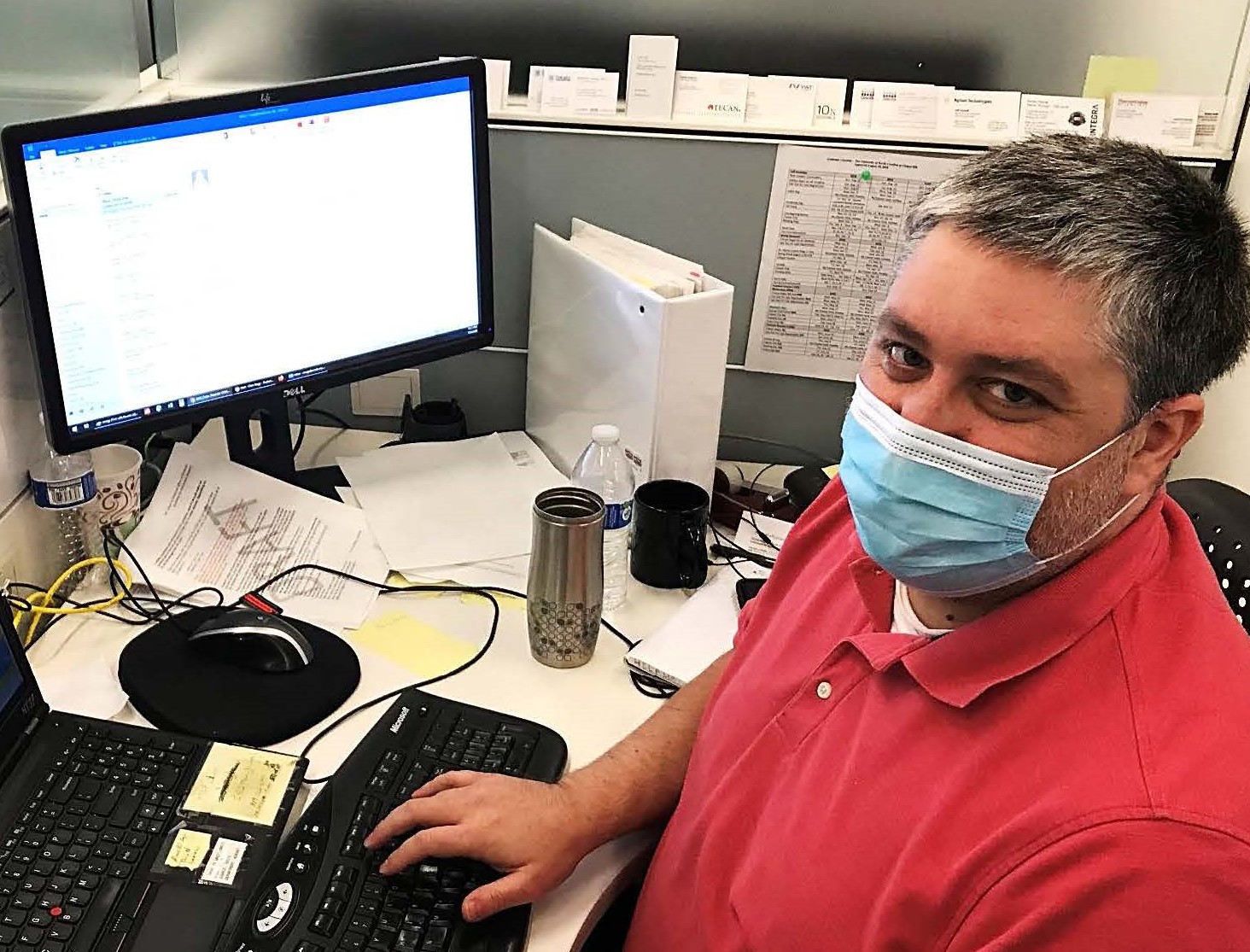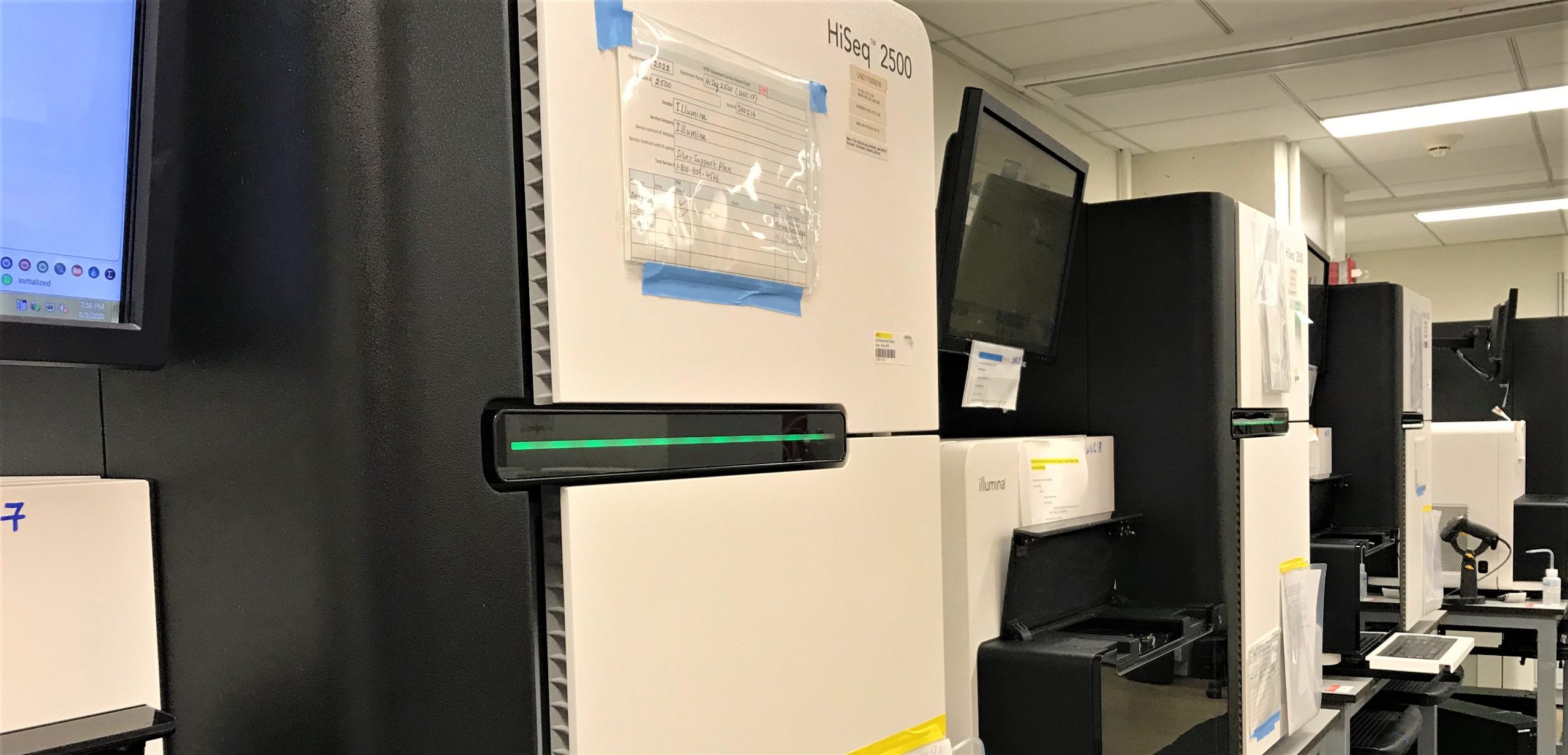QAQC Data Interpretation
 When the QAQC is complete on raw material, library and/or pool, should a customer choose, a HTSF customer associate will notify the data return contacts via email. The email will indicate if the samples have passed HTSF QAQC parameters. HTSF asks for a prompt approval to move forward. We will not proceed without approval and a delay can cause your samples to drop form the current processing queue.
When the QAQC is complete on raw material, library and/or pool, should a customer choose, a HTSF customer associate will notify the data return contacts via email. The email will indicate if the samples have passed HTSF QAQC parameters. HTSF asks for a prompt approval to move forward. We will not proceed without approval and a delay can cause your samples to drop form the current processing queue.
The QAQC email will have an attachment with Tapestation/LabChip results and will include a table with the average fragment size and concentration for each sample. Molarity, RIN, DIN, DV200 and volume will be included in the table if applicable.
- RIN – RNA Integrity Number
- DIN – DNA Integrity Number
- DV200 – percentage measurement of intact RNA molecules between 200 and 5,000 bp, the higher the percentage the higher the quality of RNA
Regardless of what is indicated at submission, if there is a problem with the QAQC of a sample, the data return contacts will be notified by email. The HTSF will discuss the issues and offer resolutions to move forward. Often a Sample Exemption Form will be required to continue processing the samples. The form will be attached to the initial email. See Common QAQC Failures and Clean Up Methods for more information. Contact HTSF if you need to discuss further.
Tapestation vs LabChip:
For RNA
The LabChip provides an RQS (RNA Quality Score), which is determined by critical RNA metrics such as peak heights, peak areas, and concentration. The RQS calculation has been validated to correlate with Tapestation’s RIN (RNA Integrity Number) and follows the same 0-10 scale rating.
| RIN Value | General RNA Condition |
| 10-7 | 10, fully intact RNA
9-7, nearly intact |
| 6-5 | Partially degraded and may work for some library preps |
| 1-3 | Seriously degraded |
| 0 | Fully degraded |
For DNA
The LabChip provides a DNA Quality Score on a scale ranging from 1-5, while the Tapestation’s DIN (DNA Integrity Number) scores only range from 1-10. Both scoring systems assume material is originating from a Eukaryote with optimal fragment sizes over 40,000 bp.
Below are tables that describe optimal results for the various QAQC measurements. Note that there is no table regarding libraries due to the fact that there is a great deal of flexibility when working with them, making quantifying a minimum amount difficult. Please contact the HTSF with specific questions regarding concentrations and volumes when submitting libraries.
RNA Results
| Optimal Ranges | Minimum for a single Rxn | |
| RIN/RQI | >9 for mRNA Assays >3 for Total RNA Assays |
7 for mRNA Assays,
>1 for Total RNA Assays |
| DV200 | >30% for Total RNA Assays | |
| Concentration | See Chart Below for Various Library Types |
Whole Genome DNA Results
| Optimum Results (Eukaryote) | |
| DIN (Tapestation)
*GQS – (LabChip) |
>9 (Tapestation),
>4.5 (LabChip) |
| Concentration | See Chart Below for Various Library Types |
*GQS is Labchip’s Genomic Quality Score. It ranges from 1-5 with 5 meaning all the molecules of a sample are about 40,000+ base pairs in size. This is similar to Tapestation’s DIN which ranges from 1-10 with 10 meaning all of the DNA fragments being over 60,000 bp in size.
**These scores are only valid for Eukaryotes.** Smaller genome organisms will get a lower score even though they may be fully intact. Furthermore, it is not a good measurement for metagenomic material either because there will be a mix of eukaryotic and prokaryotic derived DNA.
Pool Results
| Requested Minimum | Single Rxn Minimum* Molarity | |
| Molarity | >5nM | 3.5 nM |
| Concentration | See Chart Below | |

| Platform | Minimum Volume |
| MiSeq | 25 uL |
| HiSeq 2500 | 25 uL |
| HiSeq 4000 | 25 uL |
| NextSeq 2000 | 15 uL |
| NovaSeq XP Format | 25 uL |
| NovaSeq Std SP/S1 Format | 110 uL |
| NovaSeq Std S2 Format | 160 uL |
| NovaSeq Std S4 Format | 310 uL |
For more information on the difference between XP vs STD on NovaSeq, see the Illumina Platform Comparison and Specification Table for details. The NovaSeq Requirements Table lists input requirements for the various NovaSeq versions. Both of these tables can be found on Form and Guides tab, Illumina.
| Minimum Concentration @ various Frag Sizes | ||
| ng | Fragment Size (bp) | Molarity (nM) |
| 0.6 | 180 | 5.1 |
| 0.83 | 250 | 5.0 |
| 0.99 | 300 | 5.0 |
| 1.16 | 350 | 5.0 |
| 1.33 | 400 | 5.0 |
| 1.49 | 450 | 5.0 |
| 1.65 | 500 | 5.0 |
| 1.98 | 600 | 5.0 |
| 2.33 | 700 | 5.0 |
| 2.65 | 800 | 5.0 |
Poor results will require a sample exemption form to be signed before proceeding